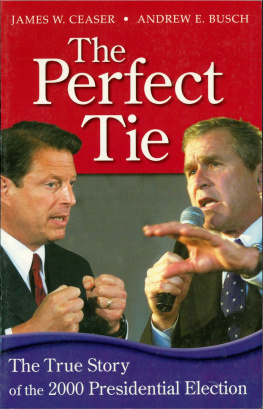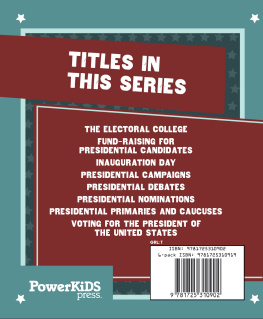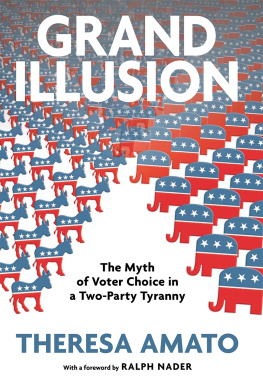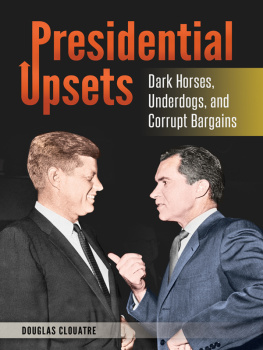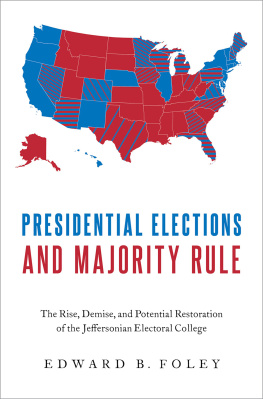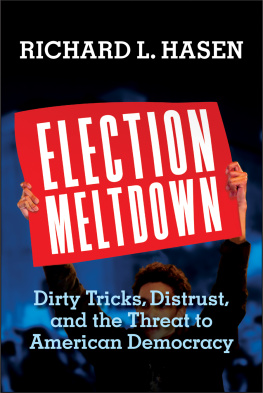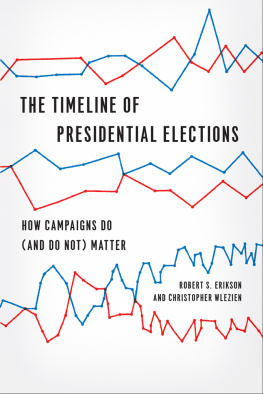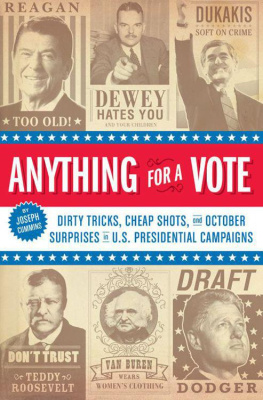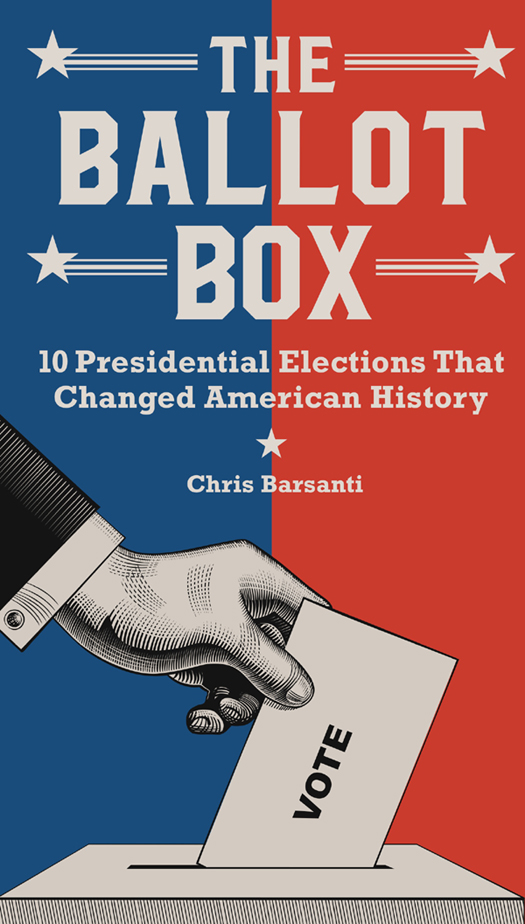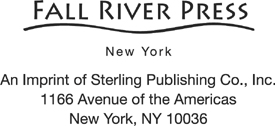FALL RIVER PRESS and the distinctive Fall River Press logo are registered trademarks of Barnes & Noble Booksellers, Inc.
All rights reserved. No part of this publication may be reproduced, stored in a retrieval system, or transmitted in any form or by any means (including electronic, mechanical, photocopying, recording, or otherwise) without prior written permission from the publisher.
For information about custom editions, special sales, and premium and corporate purchases, please contact Sterling Special Sales at 800-805-5489 or .
INTRODUCTION
A REPUBLIC, IF YOU CAN KEEP IT...
Presidents, especially in the modern era, have incredible powers. Wielding broad discretionary authorities, they can dispatch military forces around the globe, send emergency funding to a disaster zone, veto Congressional legislation, make treaties, nominate Supreme Court justices for lifetime appointments, select a large cadre of diplomats and senior officials to carry out their bidding around the country and the world, pardon those convicted of crimes, and if they so desire, launch nuclear weapons at any time of the day or night.
At the same time, the office of the president comes with significant weaknesses. Nearly every power of the executive branch enumerated above is constrained to some degree by one or both of the other two branches of government: Congress and the judiciary. Vetoes can be overridden, judges and cabinet members can fail to be confirmed, extended military deployments can be challenged or defunded, and the presidents time in office can potentially be curtailed by an impeachment trial.
The president is ultimately a powerful but deeply constrained executive. This is how the Founding Fathers imagined it. Their chief fears for the new republic were tyranny from below and tyranny from above. The first fear, as you will read later, was managed by checks on the ability of majority votes to override the desires of a minority. The second was dealt with by the restrictions placed on a president, particularly their limited time in office. Every four years, another group of candidates make their arguments to the American people about why they are the best choice for leadership. It is an imperfect system, subject to everything from disinformation to vote tampering, which does not consistently produce meritocratic excellence. But the flex and give built into the governmental framework generally allows for enough balance that the more effective leaders tend to get rewarded at the ballot box while the most ineffective or even criminal ones get shunted out either through impeachment or, more commonly, through losing reelection. Usually.
Each presidential election, then, is a chance for the country not only to judge the leadership qualities of a potential new head of state but also to take part in a referendum on what Americans find important. In one election, a majority of voters might want a president who seems able to fix a troubled economy. In another, they could veer toward a strong military leader. Not infrequently, voting decisions can also be based on factors such as personality or smart campaigning that have little to do with the job at hand.
Each time, though, the ultimate decision plays a significant role in determining what direction the country will be heading in over the next four years. That is why voters are so often told that the upcoming election is the most important one of their lifetimes. While that clich has been shamelessly overused by pundits and operatives to hype a candidate or boost turnout over the years, there are times when it is actually somewhat true.
Some elections happen at hinge moments in American history, when titanic debates over everything from slavery to war to a governments moral duty to address poverty hang in the balance. Especially in those years, a vote for a Republican, a Democrat, a Whig, or a Populist signals not only support for a particular candidate but also a statement of belief in what kind of country America should be. The ten presidential elections you will read about in this book occurred when the American democratic experiment was being critically reexamined and reshaped by millions of citizens.
That continual flux of democracy is a large part of its strength, allowing for changes that can tackle issues not conceived of or addressed at the founding. The continual shifts from one political party to another can also be a weakness, sometimes creating a whiplash effect. This chaotic and fraught dynamism is part of what Ben Franklin meant when he was asked at the end of the Constitutional Convention in 1787:... what have we gota republic or a monarchy? and he replied, A republic, if you can keep it.
These ten elections each represent large gambles on the future of the republic and often radically divergent beliefs about what is required to keep it intact for the future.
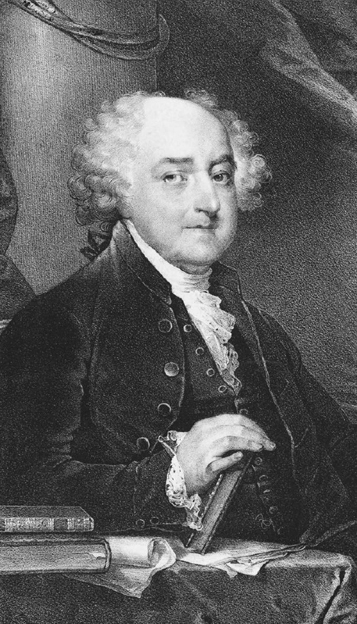
1796
JOHN ADAMS
VS.
THOMAS JEFFERSON
It is difficult now to avoid the golden age fallacy in thinking of the era of the Founders.... [To] the first presidents as well as to their critics, the early years of the republic probably seemed more like a time of troubles than a golden age.
C. Vann Woodward
Our Obligations to our Country never cease but with our Lives.
John Adams
The Candidates
*President: John Adams
Party: Federalist
Electoral Votes: 71
Vice President: Thomas Jefferson
Party: Democratic-Republicans
Electoral Votes: 68
* = Winning candidates
WHY IT MATTERED
The election of 1796 might seem like a strange place to begin this journey. It could be argued that the first election, in 1789, was the most consequential that America ever faced. In that year, the United States of America was not even a nation yet, but rather an idea only vaguely understood by the four million or so ex-British subjects scattered along the Eastern seaboard. It took some trial and error for that idea to get worked out. The first two presidential elections in 1789 and 1792, which featured neither political parties nor a popular vote, could be seen as practice runs for the real thing.
Three years after the Treaty of Paris officially concluded the Revolutionary War, the fledgling American experiment faced its own uprising. Shays Rebellion (17861787) was just a small, quickly defeated insurrection over taxation and debtor relief, but it helped convince the Continental Congress of the need for a more robust central government than the one allowed by the governing Articles of Confederation.


